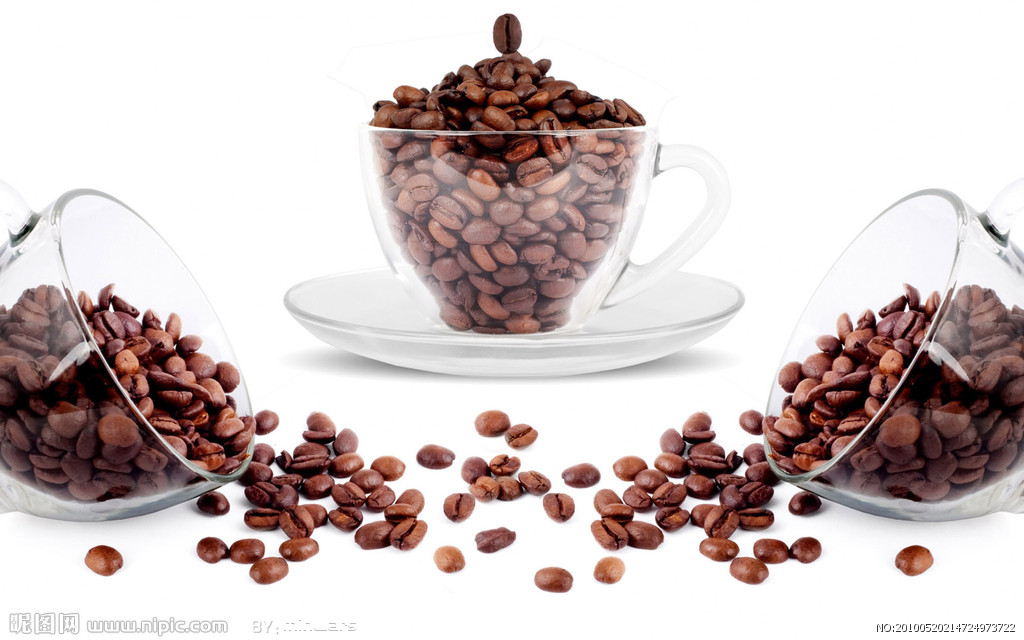Boutique coffee beans: the detailed classification of Colombian coffee beans teaches you to know boutique coffee beans.
1. Classification according to defective beans
There are two kinds of defective beans:
-the first one: it's called a first-class flaw.
-the second kind is called secondary defect.
First: major defects (defects that affect the taste characteristics of coffee): black beans, moldy beans or sour beans
Private raw bean exporters: no more than 12 first-class defective beans
National Coffee Committee: no more than 8 first-class defective beans
Second: secondary defects (defects that affect the appearance of raw beans):
Discolored beans (old beans, over-dried beans, soybeans), broken beans, insect bite beans, shell beans, unripe beans, special-shaped beans
Private raw bean exporters: no more than 60 minor defective beans
National Coffee Committee: no more than 35 secondary defective beans
Note: the number of major defective beans can be replaced by the number of secondary defective beans, and one primary defective bean is equivalent to 10 secondary defective beans.
Boutique coffee
The number of primary defective beans in Grade AA per 500g coffee is zero and the number of secondary defective beans is less than 5.
Grade A has less than 3 primary defective beans and less than 8 secondary defective beans per 500g coffee.
There are less than 8 primary defective beans and less than 35 secondary defective beans per 500g coffee in Grade.
Second, according to the size of the bean
Maragogype Marago is a special tree species with large bean body and low total yield.
No more than 5% of the bean bodies less than 17 mesh but more than 14 mesh in Supremo super-grade samples
In the super sample of Supremo screen 18 + 18 +, the bean body is below 18 mesh but not more than 5% above 14 mesh.
In the first-class samples of Excelso Extra, the number of beans with less than 16 mesh but more than 14 mesh does not exceed 5%.
In the top grade samples of Excelso EP, the percentage of beans with less than 15 mesh but more than 12 mesh is not more than 2.5% (this proportion may also be adjusted to 5% or 8% depending on demand)
U.G.Q. General "Usual Good Quality": no more than 1.5% of beans less than 14 mesh but less than 12 mesh in the sample
Three: according to the region
Traditionally, Colombian coffee is often called the Armenian / Medellin Gourmet.
A few years ago, coffee began to be sold under the name of region: Popayan, Bucaramanga, Huila, Tolima, Medellin, Nari ñ o became the main coffee producing areas.
There are two distinct periods of coffee production in Colombia: Main crop (main season), and second season (Mitaca). The time of the two production periods will be different in different regions.
For example, the harvest time of the main season
Bucaramanga from October to December.
Popayan May-June
The quality of coffee produced in the main season is usually better than that in the next season.
Four: according to the law
According to the National Coffee Council, only high-quality coffee beans are allowed to be exported. These are set by the National Coffee Committee.
Commercial classification: Maragogype, Supremo, Excelso and UGQ.
Grade: Grade AA, Grade A, Special Grade.
Each grade has specific regulations on the size and next degree of the bean.
The National Coffee Council and private bean merchants also classify several categories as boutique coffee, such as coffee with organic, sustainable and fair trade certification.
Source:
Blog of Fujian Damei Coffee
Important Notice :
前街咖啡 FrontStreet Coffee has moved to new addredd:
FrontStreet Coffee Address: 315,Donghua East Road,GuangZhou
Tel:020 38364473
- Prev

Fine coffee beans: teach you to distinguish coffee beans and coffee beans graded coffee basics
● Key to distinguish the name and specification of coffee beans ● Export port name From the indicated export port name, you can know the route of transportation. Coffee of the same origin or brand has a certain route, so it is also exported from the same port. For example, if the label is "Brazil." Santos "means it's coffee coming out of Santos, except when it's marked mocha.
- Next

World boutique coffee beans: a detailed introduction of Colombian supremo boutique beans
For many ordinary consumers who have come into contact with coffee in China, when it comes to the best coffee, what may emerge in front of people is not rare coffee such as Blue Mountains, civets and geisha, but Colombian coffee, which shows the popularity of Colombia. Colombia is located in South America, close to Panama, Brazil and Venezuela, and is one of the world's largest exporters of high-quality coffee.
Related
- Guji coffee producing area of Guji, Ethiopia: Humbela, Shakiso, Wulaga
- What is the most expensive variety of Qiloso in BOP multi-variety group?
- How to store the coffee beans bought home?
- Why are Yemeni coffee beans so rare now?
- Ethiopian Sidamo all Red Fruit Sun Sun Santa Vini Coffee beans
- SOE is mostly sour? What does it mean? Is it a single bean? what's the difference between it and Italian blending?
- Is Italian coffee beans suitable for making hand-brewed coffee?
- How to choose coffee beans when making cold coffee? What kind of coffee beans are suitable for making cold coffee?
- Just entered the pit to make coffee, what kind of coffee beans should be chosen?
- Can only Japan buy real Blue Mountain Coffee? What are authentic Jamaican Blue Mountain coffee beans?

